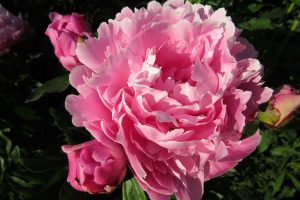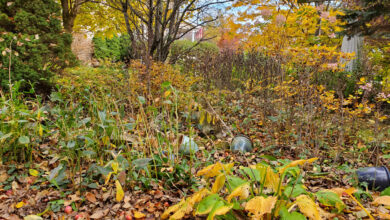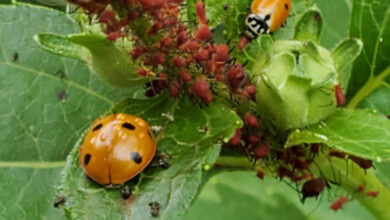Autumn care of peonies
Much of the autumn work we do in the garden revolves around preparing perennial plant material both for winter and for next spring.

Peonies are a good example. The plants are native to the northern hemisphere and are a cottage garden favorite which bloom from late May through June in our area. Autumn is the time to plant bare root peonies and divide peonies as the plants begin their winter dormancy.
Peonies are a perennial that usually do not need frequent division. Some sources advise not to divide them, and established clumps can bloom well for decades without division. If, however, your peonies have become crowded, you may want to consider dividing.
According to Illinois Extension, peonies prefer neutral to slightly acidic soil, but will not do well in soils that are extremely acid. If your soil tends to be acid, you can use lime to make the soil less acidic. Illinois Extension also recommends amending soil with sufficient phosphorus and potassium before planting or replanting peonies.
Before digging up an established plant, cut back the old tops and lift the plant while maintaining as much soil around the root ball as possible. Using a sharp knife, separate the root clump, leaving buds or “eyes” on each new planting.
Herbaceous peonies have fleshy, thick tuberous main roots with a head-like crown and secondary fibrous roots. The white or pink colored buds or eyes sit on top of the crown. Divide the crown into wedges with at least three to five buds and one to two large main roots to help provide food for next year’s growth. Plant divided peonies or bare root plants with the buds no more than one inch below the soil surface. If the buds are planted too deep, the plant normally will not flower. Set the roots beneath the growth buds.
Dividing peonies may mean fewer flowers next spring, but the plants should flower well in following seasons. When peonies finish their blooming next year, cut off any flower heads or seed pods. Allow as much foliage as possible to remain.
Peony foliage is an attractive addition to the garden after bloom time and Illinois Extension says the plants can develop outstanding fall foliage color with proper flower removal and shaping.
Leave peony foliage on the plant until after it has been killed by a hard freeze in the fall. The foliage manufactures food for the plant – the more food the peony can store in its roots, the better the flowering will be next spring.
When your foliage is ready to be cut back, cut stems to ground level and remove the foliage from the garden to control diseases such as leaf blotch and other fungal disease.
To protect against frost heaving of the bed area, apply a shallow leaf or bark mulch to the peony bed, and then dream happy dreams of beautiful peony blossoms next year.




